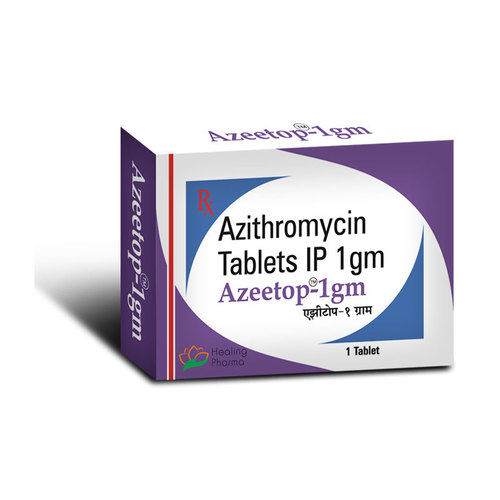
Buy Azithromycin 1000mg
Azithromycin is a medication that is used in the treatment or prevention of infections that are strongly suspected or proven to be caused by bacteria susceptible to the medication.
_tablets.jpg/440px-Zithromax_(Azithromycin)_tablets.jpg)
Azithromycin is a macrolide class of antibiotic antibiotic used to treat various bacterial infections such as respiratory tract infections, skin infections, ear infections, throat infections, sexually transmitted diseases, lung infections, pneumonia, sinuses and bronchitis.
Azithromycin belongs to the family of medications known as macrolide antibiotics. It is used to treat certain types of infections that are caused by bacteria. It is most commonly used to treat ear infections e. It can also be used to prevent mycobacterium avium complex MAC infections in people with HIV infection and to treat flare-ups of chronic obstructive pulmonary disease COPD caused by bacteria. If you have not discussed this with your doctor or are not sure why you are being given this medication, speak to your doctor. Do not stop using this medication without consulting your doctor. Do not give this medication to anyone else, even if they have the same symptoms as you do.
Azithromycin is a macrolide antibiotic used to treat a variety of bacterial infections. Azithromycin is a broad-spectrum macrolide antibiotic with a long half-life and a high degree of tissue penetration 3. It was initially approved by the FDA in 4. Azithromycin 9-deoxo-9a-aza-9a-methyl-9a-homoerythromycin is a part of the azalide subclass of macrolides, and contains a membered ring, with a methyl-substituted nitrogen instead of a carbonyl group at the 9a position on the aglycone ring, which allows for the prevention of its metabolism. This differentiates azithromycin from other types of macrolides 4. In March, a small study was funded by the French government to investigate the treatment of COVID with a combination of azithromycin and the anti-malaria drug hydroxychloroquine. Azithromycin should be used only to treat or prevent infections that are proven or strongly suspected to be caused by susceptible bacteria in order to prevent the development antimicrobial resistance and maintain the efficacy of azithromycin Label. Azithromycin is indicated for the treatment of patients with mild to moderate infections caused by susceptible strains of the microorganisms listed in the specific conditions below. Recommended dosages, duration of therapy and considerations for various patient populations may vary among these infections. Acute bacterial exacerbations of chronic obstructive pulmonary disease due to Haemophilus influenzae, Moraxella catarrhalis or Streptococcus pneumoniae.
| Package | Per Pill | Total Price | Order |
|---|---|---|---|
| 10 Pills | $1.30 |
$12.99
|
Add to cart |
| 30 Pills | $0.83 |
$24.99
|
Add to cart |
| 60 Pills | $0.67 |
$39.99
|
Add to cart |
| 90 Pills | $0.51 |
$45.99
|
Add to cart |
| 120 Pills | $0.46 |
$54.99
|
Add to cart |
| 180 Pills | $0.42 |
$74.99
|
Add to cart |
Ordering patient medications is easy. Commonly prescribed for: Bacterial Infections. Therapeutic Class: Semi-synthetic Macrolide Antibiotic. Azithromycin is a semi-synthetic macrolide azithromycin 250 mg oral tablet derived from erythromycin. It is used in veterinary medicine to treat certain bacterial infections. Azithromycin is a more popular choice than erythromycin in the treatment of dogs and cats because it has a longer half-life and is better absorbed by both species.
Azithral tablet is an antibiotic medicine. It is used to treat various bacterial infections like tonsilitis, pharyngitis, bronchitis, sinusitis, ear inflammation otitis media, skin and soft tissue infections and certain sexually transmitted infections. Azithral tablet works by killing the bacteria responsible for the infection. Take Azithral tablets in the exact dose and duration as prescribed by your doctor. You can take it with or without meals. Do not stop taking this medicine even if you feel better within a few days.

The switch to oral therapy should be done at the discretion of the physician and based on the clinical response of the patient. Due to the high rate of resistance among S. Consider adding metronidazole or other anaerobic therapy. Consider adding metronidazole. Alternatively, 1 g PO once weekly for 2 weeks plus a single dose of ceftriaxone. Lavage the infected eye s with saline to remove accumulated secretions.
Azithromycin tablets come as either mg or mg strengths. The liquid comes as mg in 5ml. The usual dose is mg a day for 3 to 10 azithromycin 250 mg oral tablet depending on the infection being treated. The dose may be lower for children or if you have liver or kidney problems. Azithromycin is sometimes prescribed long-term to prevent chest infections if you keep getting them.
UKHSA advises azithromycin is used for prevention of secondary cases of invasive group A streptococcal infection, but it is not licensed for this indication. Azithromycin may be used as detailed below, although these situations are considered outside the scope of its licence Electrolyte disturbances predisposition to QT interval prolongation ; may aggravate myasthenia gravis; predisposition to QT interval prolongation. Appetite decreased; diarrhoea; dizziness; azithromycin 250 mg oral tablet discomfort; gastrointestinal disorders; headache; hearing impairment; insomnia; nausea; pancreatitis; paraesthesia; skin reactions; taste altered; vasodilation; vision disorders; vomiting. Angioedema; anxiety; arrhythmias; candida infection; chest pain; constipation; drowsiness; eosinophilia; hepatic disorders; leucopenia; neutropenia; palpitations; QT interval prolongation; severe cutaneous adverse reactions SCARs ; tinnitus; vertigo. Acute kidney injury in adults ; aggression in adults ; akathisia in adults ; haemolytic anaemia in adults ; syncope in adults.

Each film-coated tablet contains 6. Consideration should be given to official guidance on the appropriate use of antibacterial agents. In uncomplicated Chlamydia trachomatis urethritis and cervicitis the dosage is 1, mg as a single oral dose. For all other indications the dose is 1, mg, to be administered as mg per day for three consecutive days. The same dose range as in adult patients may be used in the elderly.